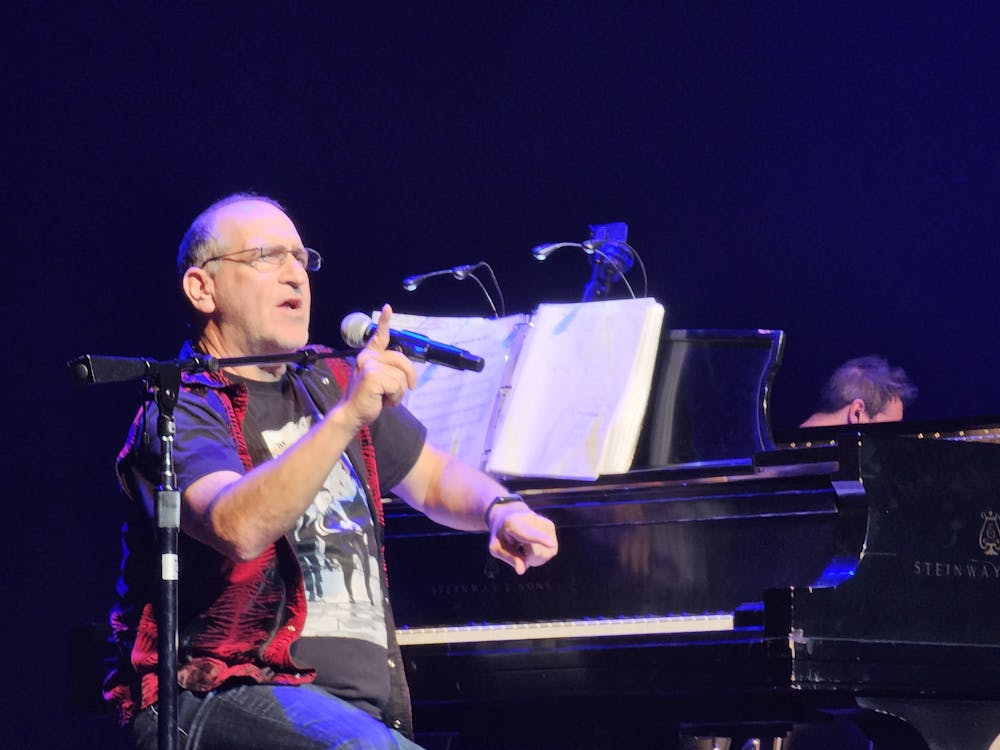Has it been a long time since you rock and rolled? Not if you attended “Neil Berg’s 50 years of Rock & Roll” at Luhrs, it has not.
Berg and his band of Broadway singers and rock musicians came to Shippensburg University to put on their rendition of classic rock songs Friday before they return to touring in November with a show in Sarasota, Florida.
Berg opens his show with songs from the 1950s playing hits such as Chuck Berry’s “Johnny B Goode” and Johnny Cash’s “Folsom Prison Blues.”
It is in the introduction to these songs that the audience first realizes that this is not a mere rock concert. Berg uses his time on stage to take the audience on a trip through the ages that is equal parts documentary and history lesson.
One way he does this is by giving the audience a look at the cultural history behind the music. For example, when introducing the Elvis Presley era of the ‘50s, he tells the audience about how Presley used to go into the “juke joints” where R&B, also known as “race music,” was performed at the time. He went to learn the moves and styles of the performers.
One performer that Berg said influenced Presley was known as Big Mama Thornton, and what better way to show this to audience than by demonstrating it.
“So, we thought we’d fuse them together to show you how Big Mama Thornton, R&B, and race music went directly to the king of rock and roll, Sir Elvis Presley,” Berg said before he and his band burst into a rendition of Presley’s “Hound Dog.” It was sung as duet with one vocalist doing his best performance of the king and the other doing Thornton.
After a tribute to Buddy Holly, Berg goes on to talk about the artist’s death in a plane crash and how it dealt a major blow to a rapidly weakening rock scene.
“The ‘Big Bopper’ crashed into an Iowa cornfield,” Berg begins. “They would call it the day the music died, and it would be the last time. Around the same time, Chuck Berry was arrested.”
“And does anybody remember one of my heroes of early rock and roll? He played the piano amazing. Does anybody remember the great chariot, Jerry Lee Lewis?,” Berg asks to set the audience up for some history. “Yeah, well, he was out marrying his 13-year-old cousin.”
Berg’s point is clear: rock and roll was hurting.
The audience and the genre come back to life when the musical trip through time hits the 1960s. Berg and company play the music of the fab four, The Beatles, with the song “I Want to Hold Your Hand.”
The show reaches a climax, however, when it travels to the 1969, the summer of love. Berg sets the stage for the music of Woodstock and performers belted powerful versions of hits such as Janice Joplin’s “Piece of my Heart.”
For the 1970s, Berg takes us through the changing sounds of decades. The band plays Led Zeppelin’s “Moby Dick” and takes through the Rolling Stones and Marvin Gaye.
Berg wraps up the decade and the show by telling the audience that rock music was once again on the downslope. The end of the ‘70s ushered in the beginning disco, but that did not mean rock was dead.
Berg would play Neil Young’s “Hey Hey, My My,” which features the line, “rock and roll will never die.”
The show ended with an encore of Journey’s “Don’t Stop Believin.” The show at Luhrs was only part one of series. Berg says he hopes to come back for part two.




The Slate welcomes thoughtful discussion on all of our stories, but please keep comments civil and on-topic. Read our full guidelines here.